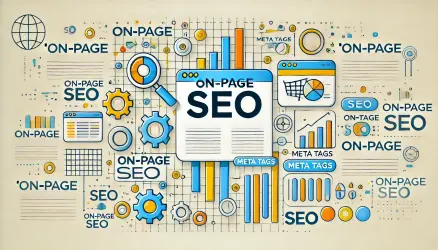A 404 error occurs when a user requests a page that doesn’t exist on your WordPress site. While some 404s are normal, a surge in them often signals something’s wrong-whether it’s a broken permalink, deleted post, or misconfigured plugin.
Understanding what causes 404 errors is the first step in preventing them from harming your SEO, user experience, and server load.
1. Broken Permalinks
This is one of the most common reasons WordPress sites start showing 404 errors. If your permalinks are misconfigured or not updated properly after plugin/theme changes, WordPress may fail to resolve URLs correctly.
Solution: Go to Settings → Permalinks and click “Save Changes” to flush rewrite rules.
2. Deleted or Moved Content
When you delete a page, post, or product but external links or bookmarks still point to it, visitors will land on a 404 page. The same happens if you change a URL slug without setting up a redirect.
Solution: Set up a 301 redirect from the old URL to the new one. Use a plugin like Redirection or Rank Math, or edit .htaccess directly if you’re comfortable.
3. Typos in Links (Internal or External)
It only takes a single misplaced character in a link to send users to a page that doesn’t exist. These errors can appear in menus, buttons, footers, or even theme files.
Solution: Use a link checker plugin or an SEO crawler like Screaming Frog to scan your site for broken internal links.
4. Custom Post Types Without Rewrite Rules
If you’re using a custom post type (e.g. portfolios, testimonials) and it’s not registered with the proper 'rewrite' => true argument in register_post_type(), you may get 404s when accessing them.
Solution: Ensure that your custom post types are registered correctly and flush rewrite rules (just like in scenario #1).
5. Conflicts with Plugins or Themes
Some plugins-especially ones that deal with SEO, multilingual content, or redirects-can interfere with WordPress rewrite rules or URL handling, resulting in unexpected 404s.
Solution: Deactivate plugins one by one to isolate the issue, and check if the 404 disappears. Use debugging tools to log rewrite behavior if needed.
6. Caching Issues
Browser cache, server-side caching, or CDN caching (like Cloudflare) may serve outdated pages or redirect loops, resulting in users seeing 404s even when the content exists.
Solution: Clear your site cache, object cache, and CDN cache. Ask users to refresh with Ctrl + F5 if needed.
7. Multilingual or Polylang Issues
If you’re using Polylang or WPML, 404s may appear when translated pages are missing, unlinked, or the language switcher points to an incorrect slug.
Solution: Ensure all translations exist and are connected properly. Re-sync permalinks for all languages if needed.
8. .htaccess File Corruption
A corrupted or missing .htaccess file can break your site’s URL structure entirely, causing all permalinks to return 404 errors-even your homepage.
Solution: Restore the default WordPress .htaccess content:
# BEGIN WordPress
<IfModule mod_rewrite.c>
RewriteEngine On
RewriteBase /
RewriteRule ^index\.php$ - [L]
RewriteCond %{REQUEST_FILENAME} !-f
RewriteCond %{REQUEST_FILENAME} !-d
RewriteRule . /index.php [L]
</IfModule>
# END WordPress9. Incorrect Domain or URL Settings
In some cases, your site URLs (under Settings → General) may not match the actual domain or subdirectory structure, leading to broken internal paths and 404s.
Solution: Make sure your WordPress Address (URL) and Site Address (URL) are correct, especially after migration or SSL changes.

Fixing the root cause of a 404 is better than masking it. Redirects help, but a technically clean site structure is even better.
Final Thoughts
404 errors are part of every website’s life, but when they start piling up, it’s time to investigate. By understanding the most common causes, you can fix and prevent them more efficiently-improving SEO, UX, and even server performance.



